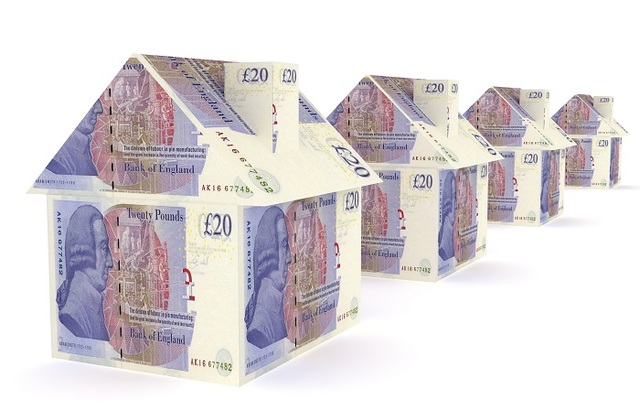The challenges posed by Covid-19 has left few markets with much to celebrate over the past 18 months. Naturally, countries everywhere have seen vast recessions which have halted short-term investment and placed under severe doubt long-term growth plans.
It is notable that while every country in the world has had its own set of unique challenges to contend with throughout Covid-19, few faced such an economically seismic impact as Britain, owing to the consequences of the extended periods of national lockdown on an economy that relies more heavily than most on consumer spending.
The question must be asked: what is the unique character of the UK property market that afforded it the opportunity to thrive while most sectors receded? Firstly, it should be noted that Britons have a famously warm relationship with bricks and mortar as an asset when compared to other countries.
Subsequently, the unique conditions of the pandemic must be considered. FJP Investment recently conducted a survey which found that nearly half (44%) of investors in the UK have been more risk-averse in their financial decision-making since the pandemic’s onset, while 39% said they were increasingly gravitating towards traditional ‘safe haven’ assets such as property.
Naturally, the introduction of the Stamp Duty Land Tax (SDLT) holiday played a part in this flurry of activity, but the explosion of growth cannot be purely attributed to this – both the activity and price records were set in months where the tax relief had begun tapering down in rate from its initial 2020 levying.
It is also the case that alternative investment opportunities dried up in markets directly affected by the pandemic, while uncertainty around short- and long-term trading conditions, owing to Covid and Brexit respectively, cooled risk-seeking activity as many looked to secure their holdings.
Business investment, for instance, fell by an estimated 10.7% in the quarter immediately following the implementation of the withdrawal agreement (Q1 2021), now 17.3% lower than the last recorded pre-pandemic levels (Q3 2019), according to ONS figures.
As such, UK property has been a robust and attractive investment opportunity over the course of the pandemic – but now is the opportune moment to consider where this may be unsustainable, how better it can be supported, and where possibilities to capitalise on the UK’s rapid vaccination roll-out may exist.
Is a return certain?
While investment into UK real estate has remained steady, it has been mainly driven by domestic demand. Indeed, there has been a natural quiet on international investment as foreign travel has been severely restricted from most countries over the past year.
The UK must be proactive in welcoming these investors back to ensure the long-term growth of the property market can be sustained.
Some will argue that reduced business investment levels are an indicator solely of more cautious attitudes.
It could be said, in fact, that they reflect a potential bottleneck of investment capacity that has been preserved for release at a time of increased surety and confidence in markets, as well as greater access – all of which should naturally follow the ending of national lockdowns.
Equally, it may be the case that a flurry of international investment into the UK property market is likely once travel corridors reopen.
Numerous industry analysts have made encouraging projections, highlighting the enduring appeal of UK property among international investors.
Knight Frank’s 2021 Wealth Report predicts that the UK will be one of the major global beneficiaries of real estate investment throughout this year, while Savills have predicted the maintenance of this trend through 2022.
Interestingly, the latter expects nearly half (47%) of all investment in this market to come from international sources.
The likelihood of a rush of pent-up investment arriving on UK shores once the fog of pandemic uncertainty begins to abate seems reasonably high.
There is good cause for confidence in the UK’s attractiveness to endure and thrive as regional areas continue to increase in yield potential, while the pace of the pandemic re-emergence appears to have given the market a competitive edge on neighbouring countries.
Why international investment matters
The UK real estate sector’s ability to entice international investment back will be crucial to its long-term recovery.
An influx of outside investment will no doubt have positive outcomes for other sectors and the economy as a whole, but most significantly, it may be the long-term answer to address the UK’s housing shortage. It is estimated that 340,000 new homes must be built in the UK every year for a decade to keep pace with the growing demand for property.
While this issue has been publicly recognised and debated through several elections and parliamentary formations, the action taken has not yet sufficiently addressed the shortfall – in 2019-20 the housing stock increased by just 244,000 homes.
While the idea of courting mass levels of international investment in UK property development, often triggers controversy, the fact is overseas investment is needed to help the city’s chances of building the necessary number of homes to match the current demand and keep housing costs affordable.
Indeed, international investors can play a vital role in supporting the construction and development sectors, by buying new residential units off-plan and funding development schemes, particularly at a time when measures are needed to alleviate the slowdown of construction, resulting from the pandemic. Furthermore, the need to harness this investment potential and direct it into the creation of homes should not be overlooked.
As the economy reopens and the property market recovers its momentum, it is more certain than ever that international investment plays a critical role in the health of the UK’s flourishing real estate business – and may hold the key to sustaining it through the pandemic recovery period.

